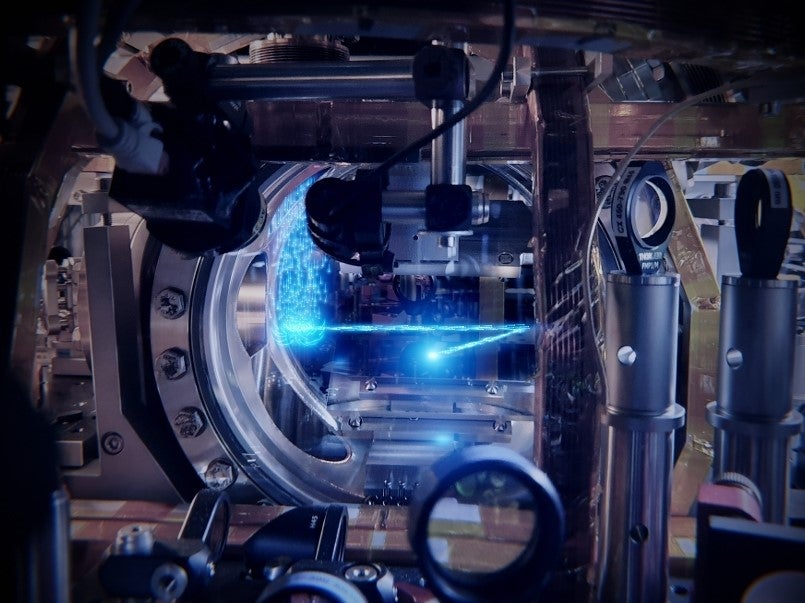The Independent's journalism is supported by our readers. When you purchase through links on our site, we may earn commission.
Scientists build laser that can run ‘forever’
Physicists say atom lasers could spark a technological revolution similar to the one created by optical lasers

Scientists have built an atom laser that can stay on forever, opening up the next-generation technology’s potential for use in commercial applications.
A research team from the University of Amsterdam solved an issue with the underlying concept of atom lasers that had puzzled physicists since they were first demonstrated nearly 30 years ago.
Unlike ordinary optical lasers, atom lasers are created out of something known as a Bose-Einstein condensate (BEC) of atoms, which output beams of matter.
They require a lot of energy to hold and a supercooled state to maintain, meaning that until now it has only been possible to run them for a short time.
“In previous experiments, the gradual cooling of atoms was all done in one place,” said Professor Florian Schreck, who led the research.
“In our setup, we decided to spread the cooling steps not over time, but in space: we make the atoms move while they progress through consecutive cooling steps. In the end, ultracold atoms arrive at the heart of the experiment, where they can be used to form cohenerent matter waves in a BEC.
“But while these atoms are being used, new atoms are already on their way to replenish the BEC. In this way, we can keep this proceess going – essentially forever.”
The extent of possible applications for an optical laser were unknown when it was invented in the 1950s, and the same may be true for atom lasers.
Some scientists hope that they will spark a similar revolution in atom optics, precision atomic clocks, and other measurements of fundamental standards. One example of this could be ultra-high resoltion holographic images that would make augmented or virtual reality appear indistinguishable from reality.
Having solved the problem of creating a continuous atom laser, the researchers now plan to use it to create a stable output beam of matter that would eliminate any barriers to technical applications.
The research was detailed in a study, titled ‘Continuous Bose-Einstein condensation’, published in the scientific journal Nature this month.

Join our commenting forum
Join thought-provoking conversations, follow other Independent readers and see their replies
Comments